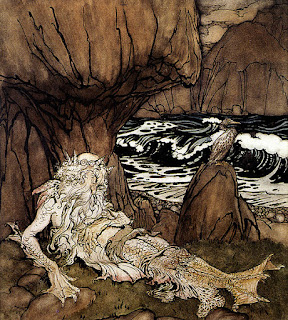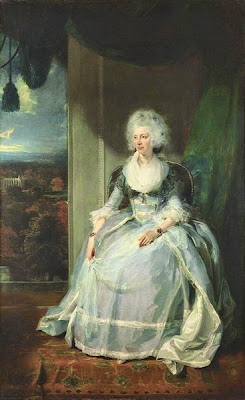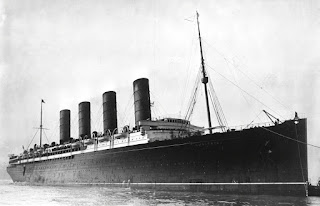---oOo---
Women in the Performing Arts
Carol M. Cram
Author of The Towers of Tuscany and A Woman of Note
Author of The Towers of Tuscany and A Woman of Note
The opportunities for women to make contributions outside the home dwindle significantly the farther we move back into the nineteenth century. There is one exception—the performing arts. In the theater and on the concert stage, women in the eighteenth and nineteenth centuries had the opportunity to be seen and admired for their talents as actresses and musicians.
In this blog, I’ll discuss how women conquered the stage from the late eighteenth century to the middle of the nineteenth century. During this period, thousands of women dedicated their lives to the performing arts. Then as now, most of the actresses and musicians—and their male counterparts—barely scraped out a living. Few women attained fame and fortune, but those who did are still known today. I’ll focus on the brilliant careers of four women—two actresses and two musicians.
Women in the Theater
In England, women first appeared on stage alongside men in the 1660s. Prior to that time, men and teenage boys played women’s roles. When women finally began to appear on stage as professional actresses, they were not considered respectable. Clouds of scandal followed the careers of many actresses who were also mistresses and sometimes even prostitutes. In the eighteenth century, the stigma associated with acting slowly began to fade thanks in large part to women such as the indomitable Sarah Siddons, the greatest actress of her age and some say of any age.
Sarah Siddons
Dubbed The Tragic Muse, Sarah Siddons dominated the London stage for almost forty years from 1775 to her retirement in 1812. Her performance of roles such as Lady Macbeth caused women to swoon and men to suck back tears. “The Siddons” was idolized in the same way pop stars are today. In comparison to many actresses of her day, Mrs. Siddons led a remarkably respectable life. She bore seven children and outlived five of them. She often performed while pregnant, sometimes within weeks of giving birth, and occasionally brought some of her children onstage.
An argument can be made that in no other public sphere apart from royalty, could a woman attain the level of fame, adoration, and income that Mrs. Siddons enjoyed at the peak of her career as an actress. Unfortunately, she was also one of the first victims of fan culture. Her legions of admirers considered her private life fair game, just as people today feel they have a right to information about the private lives of pop stars and other public figures. Although more respectable than many of her contemporaries, an unhappy marriage to William Siddons, who was also her business manager, led to the occasional whiff of scandal—most of it unwarranted.
In my third novel, Upstaged, set in early 19th Century London, Mrs. Siddons makes a cameo appearance on the stage of the New Theatre Royal at Covent Garden in September of 1809. She was a force to be reckoned with and certainly paved the way for the many famous actresses who followed her, such as Fanny Kemble, actress-singer Eliza Vestris who also managed the Olympic Theatre in 1830, and the divine Sarah Bernhardt fifty years later.
Dora Jordan
While Sarah Siddons was, most of the time, considered the very soul of respectable womanhood, another very famous actress of the period combined a brilliant career with a not-so-successful personal life. From 1779 to about 1810, Dora Jordan was to comedy what Sarah Siddons was to tragedy. Dora Jordan excelled in the “breeches” parts—roles such as Rosalind in Shakespeare’s As You Like It where the actress disguises herself as a boy. Like many of her sisters in the theater of the period, Mrs. Jordan’s private life provided great fodder for the scandal mongers. For over two decades, she was the mistress of the Duke of Clarence, George III’s third son. Together, the couple had ten children. Throughout her time with the Duke of Clarence, Mrs. Jordan continued acting on the London stage, although sometimes in front of audiences openly hostile about her personal life.
Poor Mrs. Jordan did not fare as well as Mrs. Siddons. The Duke of Clarence needed a wife capable of providing royal heirs. In 1812, he separated from Mrs. Jordan who died destitute in France in 1816. Two years later, the Duke of Clarence married Princess Adelaide of Saxe-Meinigen in Germany and in 1830 ascended the throne as William IV. His niece was the Princess Victoria, later Queen Victoria. To his credit (and there isn’t a whole lot of good to be said about the Duke of Clarence, a known supporter of slavery), he and his wife did support the ten children he had with Mrs. Jordan.
Women in Music
In the late eighteenth and nineteenth centuries, women could distinguish themselves as musical performers, primarily as singers or pianists. One of the most famous singers of the early 19th Century was Madame Catalini, an Italian diva who wowed London crowds for several seasons and received huge sums for her performances. Her high pay was her undoing. Angry crowds in 1809 booed her from the stage with cries of Nasty Pussy and Cat. Madame Catalini also makes a cameo appearance in Upstaged.
Most well bred ladies were taught to sing and play, and many performed at local balls and house parties as we know from the novels of Jane Austen. Inevitably, a handful of women, particularly those born into musical families, became proficient enough to perform professionally. Two of these women are Louise Farrenc in France and Clara Wieck (later Clara Schumann) in Germany.
Louise Farrenc
Born Louise Dumont in France in 1804, Louise Farrenc was a French composer, concert pianist, and teacher. Her parents recognized her talent as a pianist and ensured she studied with some of the top concert pianists of the day. Her marriage to Aristide Farrenc, a music publisher, enabled her to pursue her career both as a concert pianist and a composer. In 1842, she was appointed as Professor of Piano at the prestigious Paris Conservatory, a position she held for thirty years. Madame Farrenc makes a cameo appearance in my second novel A Woman of Note about a woman composer and concert pianist in 1830’s Vienna.
Clara Weick (Schumann)
Clara Schumann (nee Wieck) is probably the most famous woman composer of the 19th Century. Every time I give a presentation on A Woman of Note, I ask the audience if they can name at least two female composers from the 19th Century. Most of the time at least one person can name Clara Schumann. Another very famous composer of the period is Fanny Mendelsohn, sister of her more well known brother Felix, but a talented composer and performer in her own right.
Born in 1819 in Leipzig, Germany, Clara Wieck was destined almost before she could walk for a professional career as a concert pianist. Her father was a piano maker and teacher and recognized young Clara’s talents very early on. He virtually ignored his sons while lavishing most of his time and energy on training Clara. By the time she was twelve, Clara was performing in Paris to great acclaim. One of her concerts as a twelve-year-old in Paris is described in A Woman of Note.
Throughout her long career as a performer, Clara was considered one of the top pianists in Europe. Contemporaries such as Brahms and Liszt called Clara a “priestess” as a result of her devotion to music. Clara married the composer Robert Schumann when she was just eighteen. They often composed together and after Robert died in 1856 at the age of 46, Clara supported herself and her seven children by touring Europe as a concert performer. She often featured Robert’s Schumann’s music in her concerts and was instrumental in helping to ensure his place in history as a great composer.
Both Louise Farrenc and Clara Schumann, along with several other performers and composers of the nineteenth century, inspired the character of Isabette Grüber in A Woman of Note. Like both Louise and Clara, Isabette is a talented concert pianist who also has aspirations to be a composer. A Woman of Note follows Isabette’s struggle for recognition in a music world dominated by men.
While researching the theater and the music worlds for Upstaged and A Woman of Note, I was struck not by how few women were involved in the performing arts, but how many. Women played an integral role in shaping the development of music and theater in the 19th century—both as performers and as patrons. Rich and influential women hosted glittering music salons in Paris, Vienna, and London, while the boxes at theaters all over England and the continent heaved with avid and informed female fans.
The performing arts provided opportunities for women to shine as brilliantly as their male counterparts.
A Woman of Note was released in September 2015 by Lake Union Publishing. Upstaged is still in production, but will hopefully be released by the end of 2016. A Woman of Note was designated an Editor’s Choice by the Historical Novel Society: Cram’s writing is so vivid, you can hear the music in your head as you read. She paints an amazing portrait of a woman who desires to succeed in a field that was closed to women, with a few courageous exceptions, at the time.
Carol’s first novel, The Towers of Tuscany (Lake Union Publishing, 2014) was also designated an Editor’s Choice by the Historical Novel Society: The twists and turns of the plot, and the fast pace of the writing, make it a book that is very hard to put down. I cannot praise this novel highly enough. It is a story that lingers long after you have reluctantly reached the last page.
Visit Carol Cram at www.carolcram.com
Written content of this post copyright © Carol Cram, 2016.






















